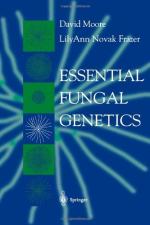|
This section contains 398 words (approx. 2 pages at 300 words per page) |
Fungi play an essential role in breaking down organic matter and thereby allowing nutrients to be recycled in nature. As such, they are important decomposers and without them living communities would become buried in their own waste. Some fungi, the saprobes, get their nutrients from nonliving organic matter, such as dead plants and animal wastes, clothing, paper, leather, and other materials. Others, the parasites, get nutrients from the tissues of living organisms. Both types of fungi obtain nutrients by secreting enzymes from their cells that break down large organic molecules into smaller components. The fungi cells can then absorb the nutrients.
Although the term fungus invokes unpleasant images for some people, fungi are a source of antibiotics, vitamins, and industrial chemicals. Yeast, a kind of fungi, is used to ferment bread and alcoholic beverages. Nevertheless, fungi also cause athlete's foot, yeast infections, food spoilage, wheat and corn diseases, and, perhaps most well known, the Irish potato famine of 1843-1847 (caused by the fungus Phytophthora infestans), which contributed to the deaths of 250,000 people in Ireland.
Fungi are not plants, and are unique and separate forms of life that are classified in their own kingdom. Approximately 75,000 species of fungi have been described, and scientists estimate that more than 90% of all fungi species on the planet have yet to be discovered. The fungi body, called mycelium, is composed of threadlike filaments called hyphae. All fungi can reproduce asexually by cell division, budding, fragmentation, or spores, although some reproduce sexually.
The main groups of fungi are chytrids, water molds, zygosporangium-forming fungi, sac fungi, and club fungi. Chyrids live in muddy or aquatic habitats and feed on decaying plants, though some live as parasites on living plants, animals, and other fungi. Water molds, distantly related to other fungi, play an important role as decomposers in aquatic habitats. Some, however, live as parasites on aquatic animals and terrestrial plants, including potato plants that can be destroyed by certain types of water molds. Zygosporangium-forming fungi also can be either saprobes, such as the well-known black bread mold, or parasites on insects, such as houseflies. Sac fungi, of which more than 30,000 species are known, include the yeast used to leaven bread and alcoholic beverages. However, many of these fungi also cause diseases in plants. Club fungi, numbering more than 25,000 species, include mushrooms, stinkhorns, and puffballs. While some fingi are edible, others produce deadly poisons.
|
This section contains 398 words (approx. 2 pages at 300 words per page) |


